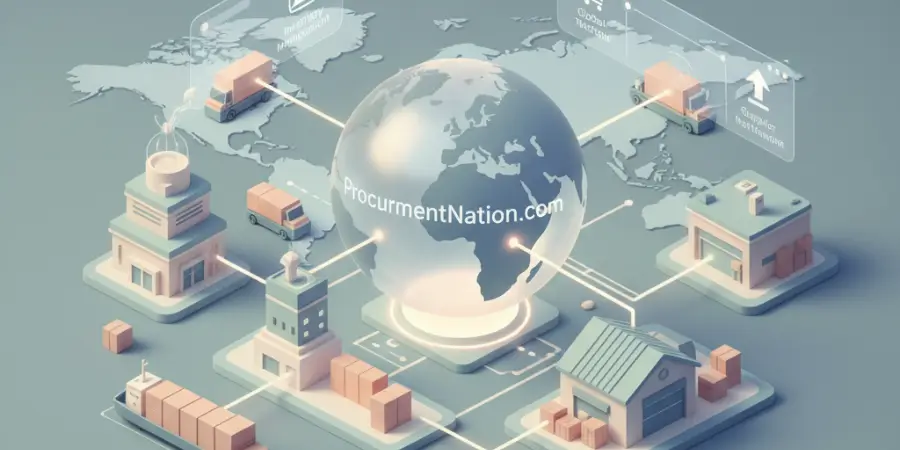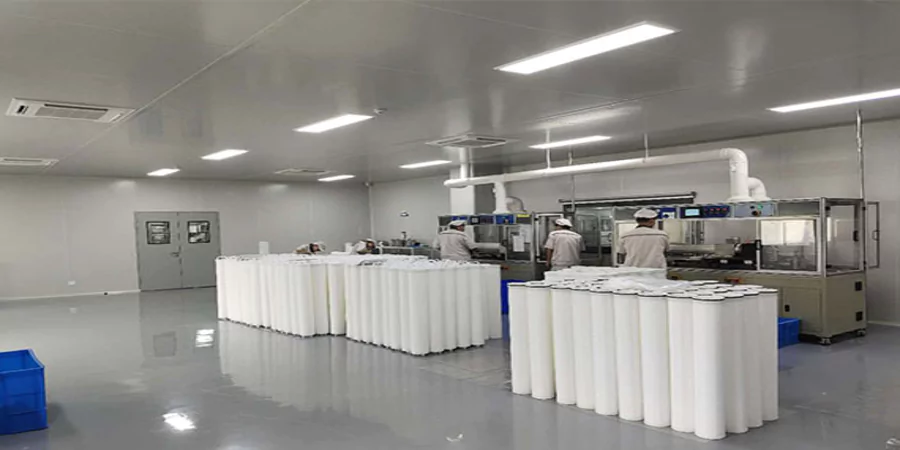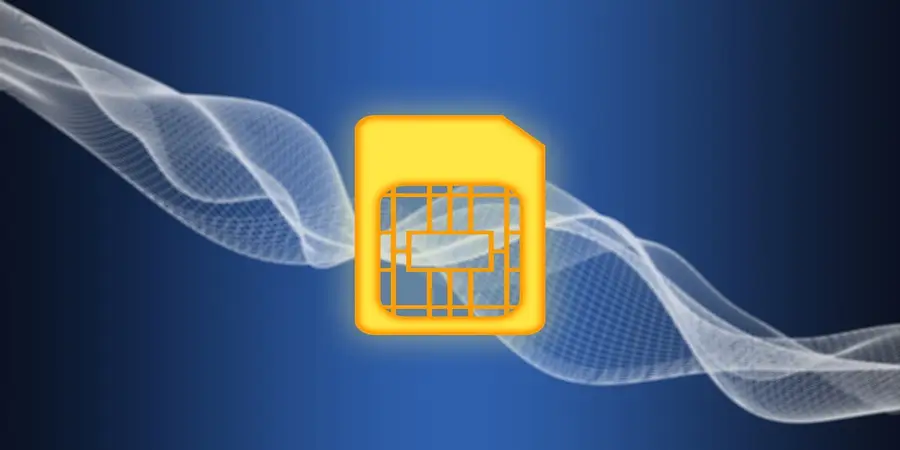Workplace safety management has evolved from paper-based incident logs and filing cabinet compliance documentation to sophisticated digital ecosystems capable of predicting hazards, automating regulatory reporting, and integrating safety data across enterprise systems yet according to research from the American Society of Safety Professionals analyzing EHS software implementations across 500+ organizations, only 38% of companies report “high satisfaction” with their safety management software deployments, with common failures attributed to poor vendor selection, inadequate change management, insufficient training, and misalignment between software capabilities and organizational safety processes. The global Environmental Health and Safety (EHS) software market reached $1.2 billion in 2024 according to MarketsandMarkets research, driven by increasingly complex regulatory requirements (OSHA, EPA, ISO 45001), growing recognition of safety program ROI (every $1 invested in workplace safety returns $4-$6 in cost avoidance), and digital transformation initiatives replacing legacy manual processes with integrated data-driven safety management approaches. For EHS managers, safety directors, risk management professionals, and operations leaders evaluating or currently implementing safety management software, understanding vendor evaluation criteria, implementation best practices, change management strategies, compliance integration requirements, and optimization techniques proves essential for achieving the productivity improvements, risk reduction, and regulatory compliance that justify software investments averaging $25,000-$150,000 annually for mid-sized organizations. This comprehensive guide examines seven evidence-based strategies for streamlining safety management software experiences, supported by regulatory standards, implementation research, and insights from organizations successfully transforming safety operations through technology adoption.
Understanding Safety Management Software Fundamentals
Defining Safety Management Software and Core Functionalities
Before examining optimization strategies, establishing clear understanding of safety management software scope and capabilities:
Safety Management Software Definition: Digital platforms designed to systematize, automate, and centralize workplace safety processes including incident management, hazard identification, risk assessment, regulatory compliance, training coordination, audit management, and safety performance analytics.
Also Known As:
- EHS Software (Environment, Health, Safety)
- HSE Software (Health, Safety, Environment)
- EHSQ Software (adding Quality management)
- Occupational Safety Software
- Safety Management Systems (SMS)
Core Functionality Categories:
Incident Management:
- Near-miss and incident reporting (web, mobile)
- Investigation workflow and root cause analysis
- Corrective action tracking (CAPA)
- Incident trend analysis and reporting
- OSHA 300/300A log automation
- Workers’ compensation integration
Risk Assessment:
- Job safety analysis (JSA) / Job hazard analysis (JHA)
- Risk matrices and scoring
- Hazard identification and tracking
- Control measure documentation
- Risk register management
- Bow-tie analysis support
Compliance Management:
- Regulatory requirement tracking
- Permit management (confined space, hot work, lockout/tagout)
- Inspection scheduling and execution
- Audit management (internal, external, regulatory)
- Document control and retention
- Regulatory reporting automation
Training Management:
- Training requirement tracking by role/task
- Course scheduling and registration
- Certification tracking and expiration alerts
- Training effectiveness assessment
- Competency management
- Learning management system (LMS) integration
Safety Observations:
- Behavioral safety observation programs
- Leading indicator tracking
- Safety walk-through documentation
- Positive recognition programs
- Employee engagement tools
Analytics and Reporting:
- Safety KPI dashboards (TRIR, DART, LTIR)
- Trend analysis and predictive analytics
- Executive reporting and scorecards
- Benchmarking against industry standards
- Custom report generation
- Real-time safety performance visibility
Market Segmentation and Software Types
By Deployment Model:
Cloud-Based SaaS (Software as a Service):
- Advantages: Lower upfront costs, automatic updates, accessibility from anywhere, scalable
- Considerations: Ongoing subscription costs, data security concerns, internet dependency
- Typical cost: $10-$50 per user/month
- Market dominance: 70%+ of new deployments (Gartner data)
On-Premise:
- Advantages: Complete data control, one-time licensing, customizable infrastructure
- Considerations: Higher upfront costs ($50K-$500K+), maintenance burden, update challenges
- Typical cost: $50,000-$500,000+ initial investment
- Market share: Declining, primarily large enterprises with specific security requirements
Hybrid:
- Combines cloud accessibility with on-premise data storage
- Addresses security concerns while maintaining flexibility
- Complex architecture requiring IT expertise
By Organization Size:
Small Business (1-250 employees):
- Simple, affordable solutions ($2K-$15K annually)
- Limited customization, pre-built workflows
- Examples: SafetyCulture (iAuditor), Safesite, SafetySync
Mid-Market (250-5,000 employees):
- Comprehensive functionality with customization
- Integration capabilities with ERP/HRIS
- Pricing: $25K-$150K annually
- Examples: Intelex, Noggin, EcoOnline, Cority
Enterprise (5,000+ employees):
- Extensive customization, global deployment
- Advanced analytics, AI capabilities
- Multiple module suites (EHS + quality + sustainability)
- Pricing: $150K-$1M+ annually
- Examples: Cority, Enablon (Wolters Kluwer), Intelex, Gensuite
By Industry Specialization:
General Purpose: Adaptable across industries Construction-Specific: Jobsite safety, contractor management, equipment tracking Manufacturing: Machine safety, process safety management (PSM), chemical management Healthcare: Infection control, patient safety, regulatory compliance (Joint Commission) Oil & Gas: Process safety, asset integrity, PSM compliance
Business Drivers for Safety Software Adoption
Regulatory Compliance:
- OSHA recordkeeping requirements (29 CFR 1904)
- ISO 45001 (Occupational Health and Safety Management Systems)
- Industry-specific regulations (PSM, EPA, DOT)
- Increasing penalties for non-compliance
- Audit trail requirements
Cost Reduction:
- Workers’ compensation insurance premiums (safety performance directly impacts rates)
- Incident costs (direct: medical, compensation; indirect: productivity loss, investigation time, reputation)
- Regulatory fines and legal settlements
- According to Liberty Mutual, workplace injuries cost US businesses $170 billion annually effective safety programs reduce this substantially
Operational Efficiency:
- Paper-based process elimination (forms, filing, manual data entry)
- Automated workflows reducing administrative burden
- Mobile accessibility enabling real-time field reporting
- Centralized data eliminating information silos
Risk Management:
- Proactive hazard identification preventing incidents
- Data-driven decision making
- Predictive analytics identifying emerging risks
- Leading indicator tracking enabling intervention before incidents occur
Cultural Transformation:
- Increased safety visibility and accountability
- Employee engagement through mobile reporting
- Recognition programs reinforcing positive behaviors
- Safety performance transparency driving improvement
According to research from the Campbell Institute (National Safety Council), organizations with mature safety management systems experience 52% lower injury rates and 64% lower workers’ compensation costs compared to organizations with immature safety programs technology enabling maturity progression.
Tip 1 – Conduct Comprehensive Vendor Selection and Needs Assessment
Defining Organizational Safety Requirements
Before evaluating vendors, map current and future safety needs:
Current State Assessment:
- Incident frequency and severity trends
- Regulatory compliance gaps and challenges
- Manual process pain points (time-consuming, error-prone)
- Data accessibility and reporting limitations
- Stakeholder frustrations (EHS staff, operations, executives)
Future State Vision:
- Desired safety culture characteristics
- Regulatory compliance goals (maintain current, pursue new certifications)
- Process automation objectives
- Integration requirements (ERP, HRIS, maintenance systems)
- Analytics and reporting needs
- Mobile workforce support requirements
Stakeholder Requirements Gathering:
EHS/Safety Team:
- Workflow alignment with current processes
- Regulatory reporting capabilities
- Investigation and root cause analysis tools
- Audit and inspection functionality
Operations/Front-Line Supervisors:
- Ease of use (minimal training required)
- Mobile accessibility (shop floor, field sites)
- Quick incident reporting
- Real-time safety data visibility
Executive Leadership:
- Safety KPI dashboards
- Benchmarking and trend analysis
- ROI demonstration
- Risk exposure visibility
IT Department:
- Security and compliance (SOC 2, ISO 27001, HIPAA if applicable)
- Integration architecture and APIs
- Data migration support
- Scalability and performance
- Support and SLA terms
Employees:
- Simple, intuitive interfaces
- Mobile-friendly (smartphones, tablets)
- Multilingual support (diverse workforces)
- Anonymous reporting options (psychological safety)
Vendor Evaluation Framework
Functional Capabilities (40% weighting):
Must-Have Features:
- Incident reporting and investigation
- Corrective action tracking
- Audit/inspection management
- Regulatory reporting (OSHA, industry-specific)
- Document management
- Training tracking
- Mobile accessibility
Nice-to-Have Features:
- Advanced analytics and predictive capabilities
- IoT sensor integration (wearables, environmental monitors)
- Artificial intelligence (incident classification, risk prediction)
- Offline mobile capability (remote locations)
- Multilingual support beyond English/Spanish
Vendor Stability and Viability (20% weighting):
- Years in business and financial health
- Customer base size and growth trajectory
- Market position and analyst recognition (Gartner, Verdantix)
- Product roadmap and innovation investment
- Customer retention rates (>90% excellent, <80% concerning)
Implementation and Support (20% weighting):
- Implementation methodology and timeline
- Data migration support and tools
- Training programs (admin, end-user, train-the-trainer)
- Customer support availability (24/7, business hours, time zones)
- Support channels (phone, email, chat, knowledge base)
- Customer success management (dedicated resources)
Pricing and TCO (15% weighting):
- Licensing model (per user, site-based, enterprise)
- Implementation costs (professional services, training, data migration)
- Ongoing costs (subscriptions, maintenance, support)
- Hidden fees (API access, extra modules, storage overages)
- Total Cost of Ownership (TCO) over 3-5 years
Integration and Technology (5% weighting):
- API availability and documentation
- Pre-built integrations (SAP, Oracle, Workday, others)
- Platform architecture (modern vs. legacy)
- Customization capabilities
- Mobile platform support (iOS, Android, web)
Vendor Selection Process
Step 1: Long List Development (Weeks 1-2)
- Research 10-15 potential vendors
- Review analyst reports (Gartner Magic Quadrant, Verdantix Green Quadrant)
- Peer recommendations (industry associations, conferences)
- Online reviews (G2, Capterra, TrustRadius)
Step 2: RFI (Request for Information) (Weeks 3-4)
- Send standardized questionnaire to 6-8 vendors
- Assess basic fit (functionality, industry experience, pricing range)
- Narrow to 3-4 finalists
Step 3: Detailed RFP (Request for Proposal) (Weeks 5-8)
- Comprehensive requirements document
- Detailed use cases and scenarios
- Request pricing proposals
- Reference customer requests
Step 4: Demonstrations and Trials (Weeks 9-12)
- Scripted demonstrations addressing specific use cases
- Hands-on trials with evaluation team
- Reference calls with current customers
- Site visits to vendor offices (enterprise purchases)
Step 5: Final Evaluation and Selection (Weeks 13-14)
- Scoring matrix based on evaluation criteria
- Financial analysis and TCO calculation
- Contract negotiation
- Executive presentation and approval
Step 6: Contract Execution (Weeks 15-16)
- Legal review
- Data processing agreements (GDPR, privacy)
- Service level agreements (SLAs)
- Terms negotiation (payment, termination, IP rights)
Typical Timeline: 3-4 months for mid-market, 6-12 months for enterprise
Common Vendor Selection Mistakes:
Selecting Based on Price Alone:
- Cheapest option often lacks critical functionality
- Hidden costs emerge during implementation
- Poor support leads to low adoption and failed implementation
Skipping Reference Checks:
- Vendor claims vs. customer reality often differ
- Reference customers reveal implementation challenges, support quality
- Ask specific questions about problems encountered, resolution
Over-Weighting Demonstrations:
- Polished demos don’t reflect daily user experience
- Insist on hands-on trial with real data
- Involve front-line users in evaluation (not just EHS team)
Ignoring Change Management Requirements:
- Technical capabilities mean nothing without user adoption
- Assess vendor’s change management support
- Consider internal capacity for driving adoption
Tip 2 – Design Implementation Strategy with Change Management Focus
Implementation Planning Framework
Phase 1: Foundation (Weeks 1-4)
Project Team Formation:
- Executive sponsor (secures resources, removes barriers)
- Project manager (day-to-day coordination)
- EHS subject matter experts (process design)
- IT representatives (technical integration)
- Change champions (front-line advocates, 1 per department)
- Vendor implementation specialists
Project Governance:
- Steering committee (executive oversight, major decisions)
- Weekly core team meetings
- Bi-weekly stakeholder updates
- Escalation procedures
Requirements Validation:
- Review vendor-proposed solution against RFP requirements
- Identify gaps requiring configuration or customization
- Prioritize must-have vs. nice-to-have features
- Define acceptance criteria for go-live
Data Migration Planning:
- Inventory legacy data (incidents, inspections, training records)
- Data cleansing (deduplicate, standardize, correct errors)
- Migration approach (manual, automated, hybrid)
- Validation procedures (data integrity checking)
Phase 2: Configuration and Customization (Weeks 5-12)
System Configuration:
- Organizational structure setup (sites, departments, roles)
- User access and permissions design
- Workflow configuration (approval routing, notifications)
- Form and template customization
- Dashboards and reports design
- Mobile app configuration
Integration Development:
- API connections to HRIS (employee data synchronization)
- ERP integration (work order systems, asset management)
- Single sign-on (SSO) implementation
- Data exchange testing and validation
Testing:
- Unit testing (individual features function correctly)
- Integration testing (systems communicate properly)
- User acceptance testing (UAT) with representative users
- Performance testing (system handles expected load)
- Security testing (penetration testing, vulnerability assessment)
Phase 3: Training and Deployment (Weeks 13-16)
Training Program Development:
- Administrator training (system configuration, reporting)
- Power user training (EHS team, supervisors)
- End user training (all employees)
- Training materials (videos, quick reference guides, job aids)
Pilot Deployment:
- Select 1-2 sites/departments for initial rollout
- Hands-on support during pilot period
- Issue identification and resolution
- Feedback gathering and system refinement
Full Deployment:
- Phased rollout (site-by-site, department-by-department) vs. big bang
- Hypercare period (intensive support first 2-4 weeks post-launch)
- Legacy system parallel running (1-2 months, then cutover)
- Go-live communication campaign
Phase 4: Stabilization and Optimization (Weeks 17-26)
Post-Launch Support:
- Help desk availability (extended hours during stabilization)
- Issue tracking and resolution
- Quick wins identification and implementation
- User feedback collection
Adoption Monitoring:
- Login frequency and feature utilization
- Data quality assessment
- Process compliance (are users following new workflows?)
- Leading indicator: Declining support tickets indicates increasing user competency
Continuous Improvement:
- Monthly review of system usage and pain points
- Quarterly feature optimization
- Annual strategy review and roadmap alignment
Change Management Strategies
Resistance Sources:
- Fear of technology (“I’m not good with computers”)
- Increased workload perception (learning curve)
- Loss of familiar processes
- Lack of understanding of benefits
- Previous failed technology implementations
Overcoming Resistance:
Communication Strategy:
- “Why” before “how”: Explain business case and employee benefits
- Multi-channel communication (email, town halls, posters, intranet)
- Consistent messaging from leadership
- Success stories and early wins
- Transparency about challenges
Stakeholder Engagement:
- Involve users in design decisions (form layouts, workflow approvals)
- Change champion network (enthusiastic early adopters promoting adoption)
- Executive visibility (leaders using system, discussing in meetings)
- Feedback mechanisms (suggestion boxes, user forums)
Training Approach:
- Role-specific training (not one-size-fits-all)
- Multiple modalities (classroom, e-learning, videos, 1-on-1)
- Just-in-time training (close to go-live, not months before)
- Ongoing education (refreshers, advanced techniques, new features)
- Gamification (leaderboards, badges, competitions for engagement)
Incentives and Accountability:
- Recognition programs (early adopters, power users)
- Performance metrics (safety KPIs now visible, accountability increases)
- Management expectations (usage requirements communicated)
- Remove barriers (provide adequate time, devices, support)
According to research from Prosci (change management consultancy analyzing 1,000+ change initiatives), projects with excellent change management are 6x more likely to meet objectives compared to projects with poor change management technical success means nothing without user adoption.
Tip 3 – Customize Workflows to Match Organizational Processes
Process Mapping and Workflow Design
Current State Documentation: Before configuration, map existing safety processes:
Incident Management Example:
- Incident occurs
- Supervisor notified (phone, in-person)
- First aid/medical treatment provided
- Incident documented (paper form, varied completeness)
- EHS team notified (email, varies by severity)
- Investigation conducted (timeline varies, documentation inconsistent)
- Root cause analysis (may or may not occur)
- Corrective actions identified (tracked in spreadsheets, emails, memory)
- Action completion verification (inconsistent follow-through)
- Regulatory reporting (OSHA 300 log, manual compilation)
Pain Points:
- Delayed reporting (supervisor finds time to do paperwork)
- Incomplete information (form fields skipped)
- Lost forms (paper misfiled or discarded)
- Inconsistent investigations (varies by supervisor capability)
- Action tracking failures (corrective actions forgotten)
- Difficult trend analysis (manual data compilation)
Future State Design (Software-Enabled):
- Incident occurs
- Immediate mobile reporting (supervisor or witness, standardized digital form)
- Automatic notifications (EHS team, management, based on severity)
- Medical treatment coordination (integrated with clinic database)
- Investigation workflow triggered (tasks assigned, deadlines set)
- Root cause analysis guided (built-in methodology, fishbone/5-whys tools)
- Corrective actions documented (responsible parties assigned, tracked)
- Automated follow-up (reminders until completion verified)
- Regulatory reporting automated (OSHA logs generated from incident data)
- Analytics and trending (real-time dashboards, predictive insights)
Benefits Realized:
- Immediate reporting (mobile accessibility removes barriers)
- Complete data (required fields prevent submission until complete)
- No lost information (cloud storage, accessible forever)
- Consistent investigations (guided workflows, checklists)
- Action accountability (automated tracking and reminders)
- Real-time analytics (dashboards update automatically)
Configuration Best Practices
Forms and Templates:
Incident Reporting Forms:
- Balance comprehensiveness with simplicity (too many fields = abandoned reports)
- Conditional logic (fields appear based on previous answers, e.g., medical treatment details only if injury occurred)
- Auto-population (employee data from HRIS, location from GPS)
- Photo/video attachments (mobile camera integration)
- Offline capability (field workers without connectivity)
Inspection Checklists:
- Regulatory compliance templates (OSHA, industry standards)
- Customizable by location/department (relevant equipment, processes)
- Scoring/weighting (risk-based prioritization)
- Corrective action triggers (automatic action creation from deficiencies)
Risk Assessment Templates:
- Standardized risk matrices (organization-wide consistency)
- Hierarchical control selection (elimination → substitution → engineering → admin → PPE)
- Risk level thresholds triggering approvals
- Residual risk tracking (post-control implementation)
Workflow Automation:
Approval Routing:
- Risk-based escalation (high-severity incidents → senior leadership)
- Department-specific routing (incidents routed to relevant supervisors)
- Deadline-based escalation (if approver doesn’t respond, escalate to manager)
- Parallel vs. sequential approvals (balance thoroughness with speed)
Notifications and Alerts:
- Immediate notifications (critical incidents, regulatory violations)
- Daily/weekly digests (pending actions, upcoming deadlines)
- Threshold alerts (injury rate exceeds target, audit score drops)
- Training expiration reminders (30/60/90 days before certification expires)
Task Management:
- Automatic task creation (from incidents, audits, observations)
- Responsibility assignment (based on location, job role, availability)
- Deadline calculation (regulatory requirements, business rules)
- Completion verification (evidence required before closing)
Balancing Standardization and Flexibility
Standardization Benefits:
- Consistent data enabling comparison across sites
- Regulatory compliance (standard processes ensure nothing overlooked)
- Training simplification (one way to do things)
- Best practice sharing (proven workflows replicated)
Flexibility Benefits:
- Accommodates site-specific needs (different industries, processes, regulations)
- Employee buy-in (local input into configuration)
- Innovation (sites can pilot improvements)
- Scalability (acquisition integration, international expansion)
Recommended Approach:
- Core processes standardized: Incident reporting, OSHA recordkeeping, training tracking
- Local flexibility allowed: Inspection frequencies, specific hazards addressed, risk assessment details
- Governance model: Corporate defines standards, sites customize within parameters
- Change control: Process for requesting changes to standardized workflows (prevents uncontrolled variation)
According to survey data from EHS Today magazine analyzing 200+ safety software implementations, organizations achieving the highest ROI (>300%) balanced standardization (65-75% of configuration) with site flexibility (25-35%) complete standardization creates user resistance, while unlimited flexibility prevents meaningful data aggregation and benchmarking.
Tip 4 – Integrate with Enterprise Systems for Data Connectivity
Integration Architecture and Priorities
Critical System Integrations:
Human Resource Information System (HRIS):
- Data Flow: HRIS → Safety Software
- Information Exchanged: Employee demographics, job titles, departments, locations, hire dates, terminations
- Benefits:
- Automatic user provisioning (new employees immediately in safety system)
- Accurate organizational structure (reporting relationships, site assignments)
- Training requirement assignment (based on job role)
- Incident rate calculations (accurate employee counts for denominators)
- Integration Method: Nightly batch synchronization (API or file transfer)
Enterprise Resource Planning (ERP):
- Data Flow: Bidirectional
- Information Exchanged:
- ERP → Safety: Asset/equipment data, maintenance schedules, work orders
- Safety → ERP: Incident costs, safety-related maintenance needs
- Benefits:
- Equipment safety history (incidents, inspections tied to specific assets)
- Maintenance integration (safety inspections trigger work orders)
- Cost tracking (incident costs allocated to cost centers)
- Integration Method: Real-time API or scheduled batch
Learning Management System (LMS):
- Data Flow: Bidirectional
- Information Exchanged:
- LMS → Safety: Training completions, certifications earned
- Safety → LMS: Training requirements, competency gaps identified
- Benefits:
- Centralized training records
- Automated compliance tracking
- Competency-based access (equipment operation requires certified training)
- Integration Method: API integration or LMS-native safety module
Computerized Maintenance Management System (CMMS):
- Data Flow: Bidirectional
- Information Exchanged:
- CMMS → Safety: Equipment status, maintenance history
- Safety → CMMS: Safety-related work orders, inspection findings
- Benefits:
- Safety-maintenance coordination
- Asset integrity management
- Preventive maintenance driven by safety data
- Integration Method: API integration
Building Management/Access Control:
- Data Flow: Building systems → Safety Software
- Information Exchanged: Building access logs, emergency mustering data
- Benefits:
- Emergency response (know who’s in building during incident)
- Contractor management (access logs verify orientation completion)
- Integration Method: API or database query
IoT Sensors and Wearables:
- Data Flow: Sensors → Safety Software
- Information Exchanged: Environmental conditions (temperature, gas levels, noise), worker vital signs, location
- Benefits:
- Real-time hazard detection (gas leaks, temperature extremes)
- Worker health monitoring (heat stress, fatigue)
- Automated data collection (replacing manual measurements)
- Integration Method: IoT platform APIs
Integration Implementation Considerations
Data Governance:
- Master data source: Which system is authoritative for each data element?
- Synchronization frequency: Real-time, hourly, daily, weekly?
- Conflict resolution: What happens when systems disagree?
- Data quality: Validation rules, error handling
- Privacy compliance: GDPR, CCPA considerations for data sharing
Technical Architecture:
- API-based integration: Modern, real-time, preferred approach
- REST APIs most common
- Authentication/authorization (OAuth, API keys)
- Rate limiting and error handling
- File-based integration: Legacy approach, batch processing
- CSV, XML, JSON file formats
- SFTP or secure file transfer
- Scheduled processing (nightly, weekly)
- Database integration: Direct database queries
- Performance concerns (can slow source system)
- Security risks (broad database access)
- Generally discouraged except read-only reporting
Integration Costs:
- Standard integrations: Often included or low cost ($1K-$5K)
- Custom integrations: $10K-$50K+ depending on complexity
- Ongoing maintenance: API changes require updates, budget 10-20% of initial cost annually
- IT resources: Internal IT involvement in integration development, testing, maintenance
Integration Testing:
- Unit testing: Individual integration components function correctly
- End-to-end testing: Data flows correctly through entire process
- Error handling: System responds appropriately to failures (network outages, invalid data)
- Performance testing: Integration handles expected data volumes without degradation
- Security testing: Data transmission encrypted, access properly controlled
Integration ROI
Quantified Benefits:
Time Savings:
- Manual data entry elimination: 2-10 hours weekly per EHS staff member
- Duplicate data maintenance eliminated: 5-20 hours monthly
- Report generation time reduction: 50-80% (automated data aggregation)
Data Quality Improvement:
- Data entry errors reduced: 60-90% (human transcription errors eliminated)
- Data completeness improved: Missing information reduced 40-70%
- Data timeliness: Real-time vs. days/weeks lag with manual updates
Compliance Enhancement:
- Audit preparation time reduced: 30-50% (integrated data readily accessible)
- Regulatory reporting accuracy: Near 100% (automated calculations from integrated data)
- Training compliance: 98%+ (automated tracking vs. 70-85% with manual)
Example ROI Calculation:
- Integration investment: $30,000 (initial) + $5,000 annually (maintenance)
- EHS staff time savings: 5 hours weekly × $50/hour × 52 weeks = $13,000 annually
- Data quality improvement value: $10,000 annually (reduced errors, better decisions)
- Compliance risk reduction: $15,000 annually (avoided violations, faster audits)
- Total annual benefit: $38,000
- Payback period: <1 year, ongoing 7:1 return
Tip 5 – Implement Comprehensive Training and Adoption Programs
Multi-Tiered Training Strategy
Administrator Training (EHS Team, System Owners):
Duration: 2-3 days intensive + ongoing Content:
- System architecture and configuration
- User management and permissions
- Form and workflow design
- Report building and customization
- Integration management
- Troubleshooting and support
- Vendor escalation procedures
Delivery: Vendor-led onsite or virtual training Timing: During implementation, before go-live Refresher: Quarterly for new features, annual comprehensive
Power User Training (Supervisors, Department Safety Coordinators):
Duration: 4-6 hours
Content:
- Core functionality (incident reporting, investigations, action tracking)
- Department-specific workflows
- Mobile app usage
- Basic reporting and dashboards
- Troubleshooting common issues
- Supporting end users
Delivery: Internal trainers (train-the-trainer) or vendor Timing: 2-3 weeks before department go-live Refresher: Semi-annual, as needed for role changes
End User Training (All Employees):
Duration: 30-60 minutes
Content:
- Why we’re implementing safety software (benefits)
- How to report incidents/near-misses (mobile app demo)
- How to complete assigned actions
- How to access safety information (policies, procedures)
- Where to get help
Delivery:
- In-person group sessions (20-30 people)
- E-learning modules (self-paced, multilingual)
- Video tutorials (5-10 minute segments)
- Quick reference cards (pocket-sized, laminated)
Timing: Within 1 week before go-live Refresher: Annual, plus new hire onboarding
Training Content Development
Learning Objectives:
- Define specific, measurable outcomes for each training tier
- Example: “Power users will be able to complete incident investigations including root cause analysis and corrective action assignment within 15 minutes”
Adult Learning Principles:
- Relevance: Connect training to daily work, use real scenarios
- Experience: Hands-on practice, not just lectures
- Application: Immediate opportunities to use learned skills
- Problem-solving: Address actual challenges they face
- Respect: Acknowledge existing expertise, build on knowledge
Training Materials:
Job Aids:
- Quick reference guides (1-2 pages, step-by-step screenshots)
- Workflow diagrams (visual process flows)
- FAQ documents (common questions and answers)
- Contact information (support resources)
Video Tutorials:
- Screen recordings with narration (3-5 minutes each)
- Mobile app demonstrations (filmed on actual devices)
- Multilingual versions (Spanish, Chinese, others as needed)
- Hosted in learning management system or video platform
Interactive E-Learning:
- Scenario-based learning (make decisions, see consequences)
- Knowledge checks (quiz questions validating understanding)
- Simulated system environment (practice without affecting live data)
- Progress tracking (compliance reporting)
Hands-On Exercises:
- Sandbox environment (training instance separate from production)
- Realistic scenarios (based on actual incidents, inspections)
- Guided practice with trainer assistance
- Independent exercises validating competency
Measuring Training Effectiveness
Kirkpatrick Model (Four Levels of Evaluation):
Level 1: Reaction (Did they like it?)
- Post-training surveys (satisfaction ratings, feedback)
- Attendance tracking (completion rates)
- Immediate feedback (verbal comments, observations)
Level 2: Learning (Did they learn it?)
- Knowledge assessments (quizzes, practical demonstrations)
- Competency verification (observed performance)
- Certification requirements (minimum scores for certain roles)
Level 3: Behavior (Are they using it?)
- System usage analytics (login frequency, feature utilization)
- Data quality metrics (complete records, timely submissions)
- Process compliance (following established workflows)
- Supervisor observations (correct usage in daily work)
Level 4: Results (Did it improve safety outcomes?)
- Safety KPI improvements (incident rates, near-miss reporting)
- Efficiency gains (time to close incidents, audit cycle times)
- Compliance improvements (regulatory violations, training compliance)
- Cost reductions (workers’ comp, insurance premiums)
Leading Indicators of Training Success:
- 80%+ attendance at training sessions
- 85%+ passing scores on knowledge assessments
- 70%+ login rates in first month post-training
- 60%+ of incidents reported via mobile app (vs. paper/email)
- <5% of support tickets related to basic usage questions (indicates good training retention)
Ongoing Learning and Support
Help Desk / Support System:
- Tiered support: Level 1 (basic questions, internal help desk) → Level 2 (advanced, vendor support)
- Knowledge base: Searchable repository of articles, FAQs, troubleshooting guides
- Ticketing system: Track issues, resolution times, recurring problems
- Response time SLAs: Critical (4 hours), high (1 business day), medium (2-3 days), low (1 week)
User Community:
- Internal forums: SharePoint, Teams, or dedicated platform
- User groups: Regular meetings (monthly/quarterly) discussing tips, challenges, use cases
- Champions network: Power users helping peers, gathering feedback for system improvements
- Newsletter: Monthly tips, new features, success stories, training opportunities
Continuous Improvement:
- Feature release training: Announce and train on new capabilities
- Advanced topics: Quarterly deep-dives into underutilized features
- Refresher training: Annual reviews of core functionality
- Role-based learning paths: Curated content for specific job functions
- Microlearning: 2-3 minute videos on single topics (mobile-friendly)
Gamification for Engagement:
- Leaderboards: Top reporters (near-misses, observations), most improved departments
- Badges/Achievements: Milestones (100 logins, first incident closed, perfect audit score)
- Competitions: Departmental challenges (highest observation rate, fastest action closure)
- Recognition: Monthly spotlight on power users, safety champions
- Prizes: Gift cards, safety gear, extra break time, parking spots
According to research from the Association for Talent Development, organizations investing in comprehensive training programs achieve 218% higher income per employee and 24% higher profit margins compared to organizations with less comprehensive training technology training proving no exception, with effective programs driving adoption rates from 40-60% (typical) to 80-95% (best-in-class).
Tip 6 – Optimize Mobile Capabilities for Field Accessibility
Mobile-First Design Principles
Why Mobile Matters for Safety:
- Where incidents occur: Shop floors, construction sites, field locations (not offices)
- Immediacy: Report while details fresh, evidence available
- Accessibility: Everyone carries smartphones (democratizes safety participation)
- Engagement: Younger workforce expects mobile-enabled processes
Mobile Functionality Priorities:
Incident Reporting:
- Simple, guided forms (5-10 fields maximum for initial report)
- Photo/video capture (document scene, equipment, injuries)
- Voice-to-text (faster data entry, especially with gloves)
- GPS location tagging (automatic, no manual entry needed)
- Offline capability (save locally, sync when connectivity restored)
- Multi-language support (match workforce demographics)
Safety Observations:
- One-click good/bad observations (positive recognition, hazard identification)
- Photo required (visual evidence)
- Category selection (housekeeping, PPE, equipment, behavior)
- Anonymous option (psychological safety, encourage reporting)
- Immediate supervisor notification
Inspections and Audits:
- Digital checklists (yes/no, scoring, comments)
- Conditional questions (appear based on previous answers)
- Photo documentation (non-conformances, corrective actions)
- E-signatures (inspector, responsible party)
- Offline functionality (remote locations, poor connectivity)
- Automatic report generation (PDF emailed upon completion)
Action Management:
- View assigned tasks (filtered by person, due date, priority)
- Update status (in progress, complete, blocked)
- Attach completion evidence (photos, documents)
- Request deadline extensions (approval workflow)
- Push notifications (new assignments, approaching deadlines)
Information Access:
- Safety policies and procedures (searchable, downloadable)
- Safety Data Sheets (SDS/MSDS) (chemical lookup)
- Emergency response guides (spill response, evacuation maps)
- Equipment operating procedures (before operation reference)
- Training materials (refresher videos, job aids)
Mobile Platform Considerations
Native Apps vs. Mobile Web:
Native Apps (iOS/Android downloads):
- Advantages: Better performance, offline capability, push notifications, camera integration, user experience
- Disadvantages: App store approval delays, version fragmentation, separate codebases (iOS + Android), user resistance to downloads
- Best for: Complex workflows, frequent usage, offline requirements
Mobile Web (Browser-Based):
- Advantages: No download required, automatic updates, single codebase, cross-platform
- Disadvantages: Limited offline capability, reduced performance, fewer device integrations
- Best for: Occasional usage, simple workflows, BYOD environments
Progressive Web Apps (PWA):
- Hybrid approach: Web technology with native-like experience
- Offline capability, push notifications, home screen icon
- No app store required
- Emerging standard, increasing vendor adoption
Device Strategy:
Bring Your Own Device (BYOD):
- Advantages: No hardware cost, employees familiar with devices, higher adoption
- Disadvantages: Security concerns, device variety (support complexity), personal data mixing with work data
- Requirements: Mobile device management (MDM), data encryption, remote wipe capability
Company-Provided Devices:
- Advantages: Standardization (easier support), security control, no personal/work data mixing
- Disadvantages: High cost ($400-$800+ per device), device management burden, loss/damage
- Use cases: High-security environments, workers without personal smartphones, ruggedized needs
Ruggedized Devices:
- Industrial-grade tablets/phones (shock-proof, water-resistant, extreme temperatures)
- Cost: $1,000-$2,500+ per device
- Use cases: Construction, mining, harsh environments
- Brands: Panasonic Toughbook, Zebra Technologies, Samsung Galaxy XCover
Driving Mobile Adoption
Barriers to Mobile Usage:
- Technology intimidation: “I’m not good with smartphones”
- Device availability: Workers don’t have smartphones or company doesn’t provide
- Connectivity concerns: Poor cellular/WiFi in work areas
- Workflow disruption: Easier to use paper (familiar process)
- Security fears: Personal device for work purposes
Adoption Strategies:
Simplicity:
- Minimize clicks (incident report in 3 screens or less)
- Large buttons (easy with gloves, outdoor conditions)
- Clear icons and labels (no jargon)
- Guided workflows (wizards preventing errors)
Demonstration:
- Live demos during training (actual devices, realistic scenarios)
- Success stories (testimonials from early adopters)
- Side-by-side comparison (mobile vs. paper timing)
- Executive usage (leaders modeling behavior)
Incentives:
- Recognition (top mobile users)
- Competitions (department with highest mobile reporting rate)
- Gamification (badges for mobile submissions)
- Remove alternatives (phase out paper gradually)
Support:
- Device troubleshooting assistance (IT help desk)
- Loaner devices (backup if personal device unavailable)
- Charging stations (break rooms, work areas)
- WiFi expansion (improve coverage in key areas)
Metrics to Track:
- Mobile adoption rate: % of incidents reported via mobile (target: 70%+)
- Response time: Incident to report submission time (mobile should reduce from hours/days to minutes)
- Photo attachment rate: % of reports including photos (visual evidence quality)
- User satisfaction: Mobile app ratings, survey feedback
- Support tickets: Mobile-related issues (should decrease over time)
According to research from Aberdeen Group analyzing mobile safety software implementations, organizations achieving 75%+ mobile adoption experience 3.2x faster incident reporting, 2.7x higher near-miss reporting rates, and 46% reduction in time to close corrective actions compared to organizations relying primarily on desktop/paper processes.
Tip 7 – Leverage Analytics and Dashboards for Continuous Improvement
Safety KPIs and Leading/Lagging Indicators
Lagging Indicators (Outcome Measures): Measure safety performance after incidents occur tell you what happened, not what will happen.
Total Recordable Incident Rate (TRIR):
- Formula: (Number of recordable incidents × 200,000) / Total hours worked
- 200,000 = 100 employees working 40 hours/week, 50 weeks/year
- Industry benchmarks: Manufacturing 3.1, construction 2.5, healthcare 4.2 (2023 BLS data)
- Target: Below industry average, year-over-year improvement
Days Away, Restricted, or Transferred (DART) Rate:
- Formula: (DART incidents × 200,000) / Total hours worked
- Subset of TRIR, more severe incidents
- Workers’ comp insurance rates heavily influenced by DART
- Target: <50% of TRIR (indicates less severe incidents)
Lost Time Incident Rate (LTIR):
- Formula: (Lost time incidents × 200,000) / Total hours worked
- Most severe incidents requiring time off work
- Target: <0.5 for most industries
Severity Rate:
- Formula: (Total lost workdays × 200,000) / Total hours worked
- Measures impact, not just frequency
- High frequency + low severity vs. low frequency + high severity (different interventions)
Workers’ Compensation Costs:
- Total costs (medical, indemnity, administration)
- Cost per claim
- Reserve changes (indicates severity trends)
- Experience Modification Rate (EMR) (insurance pricing factor)
Leading Indicators (Predictive Measures): Measure activities and conditions that prevent incidents tell you what might happen, allow proactive intervention.
Near-Miss Reporting Rate:
- Near-misses per 200,000 hours worked
- Heinrich’s Triangle: 1 major injury : 29 minor injuries : 300 near-misses
- Target: 10-20x incident rate (robust reporting culture)
- Increasing rate often positive (better reporting, not more hazards)
Safety Observation Rate:
- Observations per employee per month
- Positive observations (recognition) + at-risk observations (intervention)
- Target: 1+ observation per employee monthly
Audit/Inspection Scores:
- Compliance percentage on safety audits
- Trend analysis (improving, declining, stable)
- Target: 90%+ compliance, upward trend
Training Compliance:
- % of employees current on required training
- Training hours per employee annually
- Target: 98%+ compliance, increasing hours
Corrective Action Closure Rate:
- % of actions closed on time
- Average days to closure
- Target: 90%+ on-time, <30 days average
Safety Meeting Attendance:
- % of employees attending safety meetings
- Target: 95%+ for required meetings
Hazard Identification Rate:
- Hazards identified per site/department
- Resolution time for identified hazards
- Target: Increasing identification (proactive culture)
Dashboard Design and Visualization
Executive Dashboard (C-Suite, Board):
Content:
- TRIR, DART, LTIR (current, trend, benchmark)
- Workers’ comp costs (actual vs. budget)
- Leading indicator summary (observations, near-misses, training compliance)
- High-severity incident summaries
- Compliance status (regulatory, internal standards)
- Corrective action aging (overdue, high-risk)
Format:
- High-level, visual (graphs, gauges, scorecards)
- Red/yellow/green status indicators
- Drill-down capability (executives can explore details)
- Mobile-accessible (review anywhere)
- Update frequency: Real-time or daily
EHS Manager Dashboard:
Content:
- All KPIs with detailed breakdowns (site, department, incident type)
- Incident funnel (reported → investigated → actions identified → actions completed)
- Audit schedules and upcoming deadlines
- Training compliance by department/role
- Open corrective actions by priority and age
- Inspection overdue report
- Trend analysis (monthly, quarterly, annual)
Format:
- Detailed, actionable data
- Filters (date range, location, severity)
- Export capability (reports for leadership)
- Update frequency: Real-time
Supervisor Dashboard:
Content:
- Department-specific incidents and near-misses
- Assigned corrective actions (for team members)
- Team training compliance
- Safety observations (team performance)
- Department safety score vs. organization
- Upcoming inspections/audits
Format:
- Simple, focused on team performance
- Actionable alerts (overdue actions, training expirations)
- Mobile-accessible
- Update frequency: Daily
Front-Line Employee View:
Content:
- Personal assigned actions
- Personal training status and upcoming requirements
- Department safety performance (vs. company)
- Recognition (safety observations submitted, milestones)
Format:
- Personal, motivational
- Gamification elements (progress bars, achievements)
- Mobile-first
- Update frequency: Real-time notifications, daily summary
Advanced Analytics Capabilities
Predictive Analytics:
- Risk prediction models: Machine learning identifying high-risk scenarios before incidents occur
- Leading indicator correlations: Statistical analysis linking leading activities to lagging outcomes
- Seasonal patterns: Time-series analysis revealing incident trends (weather, production cycles, fatigue)
- High-risk employee identification: Patterns indicating individuals needing additional training/support
Root Cause Analysis:
- Incident categorization: Natural language processing analyzing incident descriptions
- Common cause identification: Clustering similar incidents revealing systemic issues
- Contributing factor analysis: Multi-variate analysis isolating causal factors
- Effectiveness tracking: Corrective action impact measurement
Benchmarking:
- Internal: Compare sites, departments, job roles
- External: Industry averages, peer companies, best-in-class
- Sources: BLS statistics, industry associations, vendor benchmarking pools
- Value: Identify outliers (investigate both high and low performers)
Text Analytics:
- Sentiment analysis: Employee survey responses, incident narratives
- Keyword extraction: Common themes in near-miss reports, observations
- Trend identification: Emerging issues before manifesting in incidents
Geospatial Analysis:
- Heat mapping: Incident concentration by location (facilities, work areas)
- Risk visualization: High-risk zones identified
- Resource allocation: Target interventions to highest-risk areas
Data-Driven Decision Making
Monthly Safety Review Process:
Step 1: Data Collection (Day 1-3)
- Extract KPIs from safety software
- Compile supplementary data (workers’ comp, absenteeism, quality defects)
- Site/department submit narratives (highlights, challenges, initiatives)
Step 2: Analysis (Day 4-7)
- Identify trends (improving, declining, stable metrics)
- Benchmark performance (internal, external)
- Root cause exploration (why are trends occurring?)
- Best practice identification (what are high performers doing?)
Step 3: Action Planning (Day 8-10)
- Prioritize focus areas (highest risk, greatest improvement opportunity)
- Define interventions (training, engineering controls, behavior-based programs)
- Assign ownership and resources
- Establish success metrics and timelines
Step 4: Communication (Day 11-14)
- Leadership briefing (executive summary, recommendations)
- Site/department feedback (performance results, action plans)
- Employee communication (safety newsletter, town halls, posters)
- Celebrate wins (recognition, rewards)
Step 5: Implementation and Monitoring (Ongoing)
- Execute action plans
- Track progress (leading indicators)
- Adjust based on results
- Document lessons learned
Quarterly Strategic Review:
- Broader trends and strategic initiatives
- Budget implications (workers’ comp reserves, safety investments)
- Regulatory landscape changes
- Long-term program effectiveness
- Annual goal progress
Example: Data-Driven Intervention
Observation: DART rate increased 40% in Q3 vs. Q2 at Site A Analysis:
- 8 of 12 incidents involved hand injuries
- 6 of 8 occurred during morning shift (6am-2pm)
- 7 of 8 involved employees with <1 year tenure
- Common tasks: Equipment adjustments, maintenance
Root Causes Identified:
- Inadequate glove selection (cut-resistant needed)
- Rushing to start production (morning pressure)
- Insufficient training for new employees
- Poor equipment design (pinch points)
Interventions Implemented:
- Upgraded to cut-resistant gloves for all maintenance tasks
- Added 15-minute pre-shift safety briefing (eliminate rush)
- Enhanced new hire training (hands-on equipment safety module)
- Engineering controls (guards added to high-risk equipment)
- Supervisor accountability (hand safety coaching expectations)
Results (3 months post-intervention):
- Hand injuries decreased 70% (8 → 2.4 annualized rate)
- Near-miss reporting increased 30% (better awareness)
- Employee feedback positive (feel safer, better equipped)
- Cost avoidance: $180,000 estimated (workers’ comp, productivity)
This cycle data observation, analysis, intervention, results measurement represents continuous improvement methodology enabled by robust safety management software analytics.
Common Implementation Pitfalls and How to Avoid Them
Treating Software as Silver Bullet
The Problem: Believing software alone will improve safety without addressing underlying culture, processes, and behaviors.
Reality: Technology enables better safety management but doesn’t create safety culture. Organizations with poor safety culture implementing excellent software achieve minimal improvements.
Solution:
- Assess safety culture before/during implementation (surveys, focus groups)
- Address cultural issues concurrently (leadership engagement, employee empowerment)
- Use software as enabler, not solution
- Measure cultural indicators (reporting culture, learning culture, just culture)
Over-Customization and Feature Creep
The Problem: Configuring every possible feature, creating overly complex system that overwhelms users and delays implementation.
Reality: 80/20 rule applies 20% of features deliver 80% of value. Complex systems drive low adoption.
Solution:
- Phased implementation: Core features first (incident reporting, actions, compliance), advanced later
- Minimum viable product mindset: What’s essential for Day 1?
- User testing: Validate simplicity with front-line employees
- Resist customization: Use standard workflows unless compelling business reason
Inadequate Data Migration Planning
The Problem: Underestimating complexity of migrating legacy data (paper records, spreadsheets, old systems) to new software.
Reality: Data migration consumes 30-50% of implementation timeline and budget. Poor quality legacy data becomes poor quality new system data.
Solution:
- Data audit: Inventory what exists, assess quality
- Prioritize: What data is essential vs. nice-to-have? (active employees: yes, terminated employees from 10 years ago: no)
- Cleanse before migration: Fix errors, standardize formats, deduplicate
- Staged approach: Critical data first, historical data later (or archive separately)
- Validation: Verify accuracy post-migration before go-live
Ignoring Mobile Workforce Needs
The Problem: Designing system for office-based EHS team, forgetting front-line workers are primary data sources.
Reality: Safety happens in field/shop floor. Desktop-only solutions create barriers to reporting, drive low engagement.
Solution:
- Mobile-first design: Assume primary access via smartphone
- Pilot with front-line workers: Test usability in actual work environments
- Connectivity planning: Offline capability for remote locations
- Device strategy: BYOD vs. company-provided, ruggedized if needed
Underestimating Change Management
The Problem: Focusing 90% of effort on technical implementation, 10% on people/process change.
Reality: User adoption determines success more than technical functionality. Best system unused delivers zero value.
Solution:
- Dedicated change management resources: Not “extra responsibility” for project manager
- Executive sponsorship: Visible, sustained leadership engagement
- Communication plan: Multi-channel, frequent, consistent messaging
- Training investment: Adequate time, multiple modalities, ongoing support
- Celebrate wins: Early adopters, quick wins, milestones
Setting Unrealistic Timelines
The Problem: Aggressive go-live dates creating rushed implementation, inadequate testing, poor training.
Reality: Quality implementation takes time. Rushing creates technical debt, user frustration, failed adoption.
Solution:
- Realistic planning: 3-6 months minimum for mid-market, 9-18 months for enterprise
- Buffer time: Add 20-30% contingency for inevitable delays
- Phased rollout: Pilot sites before full deployment
- Quality gates: Don’t proceed until criteria met (testing complete, training delivered)
According to research from Panorama Consulting analyzing 1,000+ software implementations across industries, projects with realistic timelines, adequate change management, and phased approaches achieve 87% user adoption rates compared to 43% adoption for rushed, poorly managed implementations proving that slow, deliberate implementation ultimately faster to value than hasty launches requiring extensive rework.
Measuring Safety Software ROI
Cost Components
Initial Costs:
- Software licensing (perpetual or first-year subscription): $25,000-$150,000
- Implementation services: $15,000-$100,000+
- Data migration: $5,000-$30,000
- Integration development: $10,000-$50,000
- Training: $5,000-$20,000
- Hardware (if needed): $10,000-$50,000
- Total initial investment: $70,000-$400,000 (varies dramatically by organization size, complexity)
Ongoing Costs:
- Annual subscription (SaaS): $25,000-$150,000
- Maintenance and support: 15-20% of perpetual license cost
- Internal administration: 0.25-1.0 FTE (depending on system complexity, user base)
- Training for new employees: $2,000-$10,000 annually
- System enhancements: $5,000-$20,000 annually
- Total annual costs: $35,000-$200,000
Benefit Quantification
Workers’ Compensation Savings:
- Average incident cost: $40,000-$50,000 (direct + indirect)
- Even modest incident reduction generates significant savings
- Example: 5% incident reduction (20 → 19 incidents) = $40,000-$50,000 savings
- EMR improvement: 0.10 reduction = 10% insurance premium savings (can be $50,000-$500,000+ annually)
Productivity Improvements:
- EHS staff efficiency: 20-40% time savings (automation, centralized data)
- Example: 2 EHS staff @ $80K salary, 30% time savings = $48,000 value annually (reallocated to proactive activities)
- Supervisor time: Incident management time reduced 25-50%
- Example: 20 supervisors, 2 hours monthly on incidents, 40% reduction, $50/hour = $9,600 annually
Compliance and Audit:
- Audit preparation time: 50-70% reduction
- Example: 40 hours → 15 hours, $75/hour = $1,875 per audit
- Violation avoidance: OSHA violations $5,000-$13,000 per serious violation
- Example: Avoid 1-2 violations annually = $10,000-$26,000 value
Operational Efficiency:
- Paper/printing reduction: $2,000-$10,000 annually
- Travel reduction: Virtual audits, remote access = $5,000-$20,000
- Storage costs: Paper filing eliminated = $1,000-$5,000
Risk Mitigation:
- Litigation avoidance: Major incident lawsuits = 100,000−100,000- 100,000−millions
- Probability reduction difficult to quantify but substantial value
- Reputational protection: Hard to quantify but increasingly important
ROI Calculation Example
Mid-Market Manufacturer (500 employees, TRIR 4.5)
Investment:
- Initial: $120,000 (software, implementation, training)
- Annual: $50,000 (subscription, support, administration)
- 3-Year Total Cost: $270,000
Benefits (Annual):
- Workers’ comp savings (10% incident reduction, 2 incidents prevented): $90,000
- EHS staff productivity (1.5 FTE, 30% efficiency gain): $36,000
- Supervisor time savings (15 supervisors, incident management): $7,500
- Audit efficiency (4 audits annually, 50% time reduction): $6,000
- Compliance (1 serious violation avoided every 2 years): $6,500
- Paper/administrative: $4,000
- Total Annual Benefits: $150,000
3-Year ROI:
- Benefits: $450,000 (3 × $150K)
- Costs: $270,000
- Net Benefit: $180,000
- ROI: 67% over 3 years, 22% annually
- Payback Period: 1.8 years
Note: This example conservative many organizations achieve higher returns through greater incident reductions, insurance premium improvements, and productivity gains.
Intangible Benefits
Beyond quantifiable ROI, safety software delivers value difficult to measure financially:
Safety Culture Enhancement:
- Increased employee engagement and morale
- Reduced fear of reporting (anonymous options, no-blame culture)
- Empowerment (everyone contributes to safety)
- Transparency and accountability
Decision-Making Quality:
- Data-driven vs. anecdotal/gut-feel decisions
- Faster identification of emerging risks
- Resource allocation optimization
- Strategic planning improvement
Competitive Advantage:
- Customer/client requirements (many require safety management systems)
- Tender/bid advantage (safety record differentiation)
- Talent attraction and retention (safer workplace, modern technology)
- Industry leadership positioning
Regulatory Relationship:
- Proactive compliance demonstration
- Faster, more confident audit responses
- Reduced regulatory scrutiny
- Partnership vs. adversarial relationship
Conclusion: Technology as Safety Culture Enabler
Safety management software represents more than digital transformation of manual processes it embodies strategic opportunity to fundamentally enhance organizational safety culture, regulatory compliance, operational efficiency, and risk management effectiveness. The seven strategies examined conducting comprehensive vendor selection aligned with organizational needs, designing implementation with change management primacy, customizing workflows matching operational realities, integrating across enterprise systems for data connectivity, implementing multi-tiered training programs driving adoption, optimizing mobile capabilities for field accessibility, and leveraging analytics for data-driven continuous improvement provide evidence-based framework for maximizing safety software value while avoiding common implementation pitfalls that plague organizational technology initiatives.
However, technology success depends ultimately on recognizing software as enabler rather than solution: the most sophisticated safety management platform delivers minimal value in organizations lacking leadership commitment to safety, employee engagement, and continuous improvement culture. Conversely, organizations demonstrating safety commitment but constrained by paper-based processes and disconnected systems discover that appropriate technology amplifies existing positive culture while addressing operational barriers that previously prevented achieving safety excellence.
The path to safety software success requires:
Strategic Vendor Selection: Moving beyond feature checklists toward comprehensive evaluation of functional capabilities, vendor stability, implementation methodology, total cost of ownership, and cultural fit ensuring long-term partnership rather than transactional vendor relationship.
Implementation Excellence: Allocating adequate resources, establishing realistic timelines, prioritizing change management alongside technical configuration, and recognizing that careful, deliberate implementation ultimately delivers faster time-to-value than rushed deployments requiring extensive rework.
User-Centric Design: Configuring systems for actual users (front-line workers, supervisors, EHS professionals) rather than idealized processes, emphasizing mobile accessibility, simplicity, and workflow alignment enabling rather than impeding daily work.
Adoption Focus: Investing comprehensively in training, support, communication, and incentives recognizing that unused software regardless of technical capabilities delivers zero return on investment.
Continuous Optimization: Treating go-live as beginning rather than end of journey, systematically gathering feedback, measuring adoption and outcomes, refining configuration, and expanding capabilities as organizational maturity progresses.
For EHS managers, safety directors, and operations leaders navigating safety software selection and implementation, the evidence proves clear: organizations following structured, user-focused, change-management-intensive approaches achieve 80-95% user adoption, 20-40% efficiency improvements, 10-25% incident reductions, and 200-400% returns on technology investments over 3-5 years. These outcomes require commitment, resources, and sustained effort but the alternative of maintaining paper-based, disconnected, reactive safety management approaches in an increasingly complex regulatory and operational environment proves ultimately more costly in financial terms, operational efficiency, and most critically, preventable employee injuries that comprehensive safety management software helps organizations systematically reduce.
















